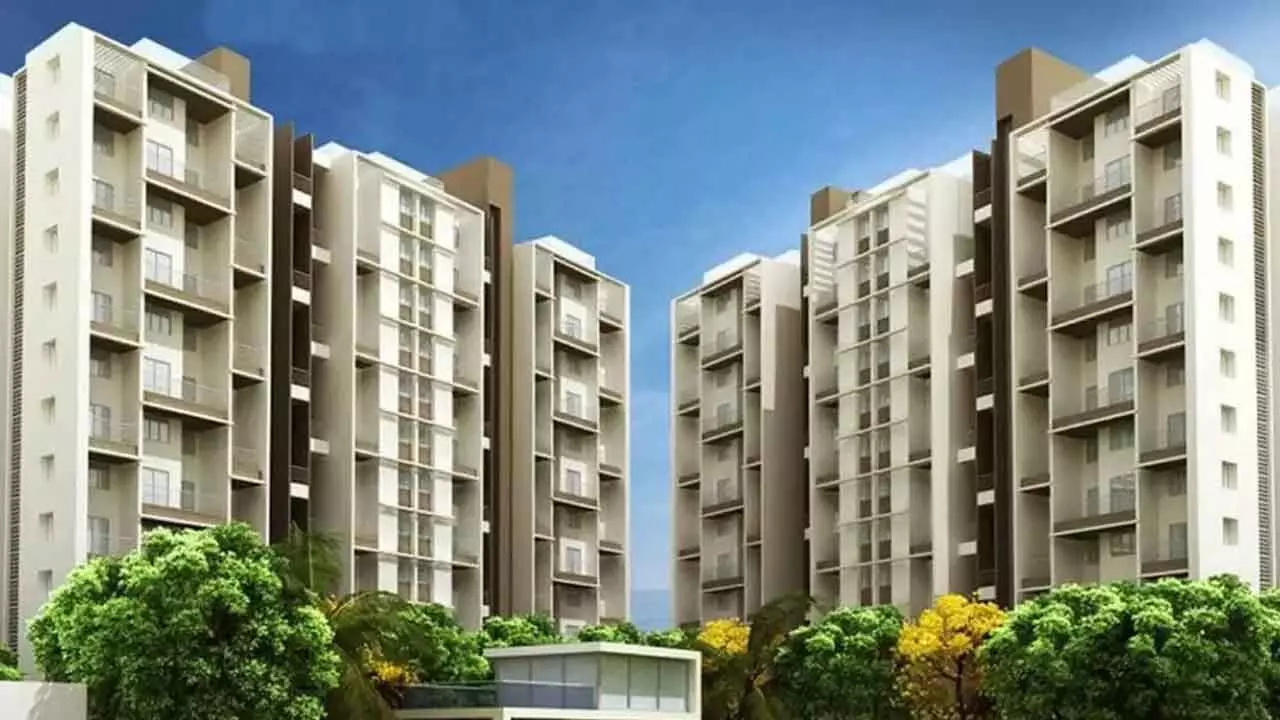40% Of India's Population May Reside In Urban Areas By 2030
The new airport will have the capacity to serve 9 crore passengers annually and will boost growth around the 90,000 acres of surrounding land, via the Navi Mumbai Airport Influence Notified Area
40% Of India's Population May Reside In Urban Areas By 2030

The future looks bright and through stable regulatory policies, the real estate sector will play a vital role in achieving India’s $5 trillion economy goal -- Ramani Sastri, Chairman & MD, Sterling Developers
Mumbai: Around 40 per cent of India's population, equivalent to 60 crore people, is expected to reside in urban areas by 2030. Anticipating the growing need for quality urban infrastructure, India is expected to invest over Rs143 lakh crore in infrastructure by 2030. Most of this expenditure is to be directed towards urban clusters, driving significant activity in infrastructure-led urban development.
Projects under consideration include second airports, inter-city metro connectivity, aero-cities, highways (including quick transit freeways), high-speed rail corridors, IT + ITES zones, large datacenter concentration zones, among others.
Talking to Bizz Buzz, Ramani Sastri, Chairman & MD, Sterling Developers says, “We expect continued targeted measures by the government to further push real estate growth and unlock its full potential.”
All in all, the future looks bright and through stable regulatory policies, the real estate sector will play a vital role in achieving India’s $5 trillion economy goal, he said.
Infrastructure investments of over ₹143 lakh crore in projects such as new airports, metro networks, aero-cities, and large data centers concentration zones are set to transform neighborhood micro-markets in regions like the MMR, Gujarat, Bangalore, Chennai, NCR, and Hyderabad.
Swapnil Anil, Managing Director of Advisory Services at Colliers India, says, “These regions are expected to witness a 1.5 to 4X increase in land prices by 2030, boosting the growth of satellite townships across India and creating promising opportunities for property investment.”
Leading the surge, the MMR region is poised for over 3.9 times appreciation, particularly in locations like Khopoli, driven by key infrastructure initiatives such as the MTHL, Navi Mumbai Airport Influence Notified Area (NAINA), JNPT expansion, and the Mumbai-Pune Missing Link Project, he said.
There lies a host of key existing and upcoming Infrastructure projects Impacting Urbanisation in India:
Operational since 2024, Mumbai Trans-Harbour Link is a groundbreaking infrastructure project, being the longest sea bridge in India. Aimed at enhancing connectivity between Mumbai and Navi Mumbai, it has reduced travel time from 2 hours to 30 mins. Further, it provides quick access to the Mumbai-Pune highway, the Mumbai-Nagpur Highway and the Mumbai Goa Highway.The MTHL has positively impacted areas like Uran, Talegaon, Panvel, and Kharghar, with land prices appreciating nearly 2.3X from Rs1200 to Rs2250 per sq.ft. (2020 to 2024).
Likewise, Bangalore Kempegowda International Airportis among the 3rd busiest airports in India, currently serving 3.7 crore passengers annually, operating over 300 flights daily and connecting over 100+ destinations worldwide.
Operationalisation of this airport has added a new dimension to the expansion of North Bangalore. Projects such as BIAL, STRR, Tech Parks, Aerotropolis etc. are designed to be integrated townships, with significant contribution towards the city’s future economy. These announcements have contributed to a nearly 2.5X land price appreciation, from Rs1800 to Rs4500 per sq.ft. in the period 2020 to 2024, most pronounced around the north Bangalore micro-markets like Devanahalli, Chikkaballapur, Hebbal and Yelahanka.
Navi Mumbai Airport & NAINA, which is currently under construction and estimated completion by 2025, is going to be India’s first airport with multi-modal transport connectivity. The airport is a remedy for the rising air traffic and resulting congestion at the existing CMI Airport. This new airport will have the capacity to serve 9 crore passengers annually and will boost growth around the 90,000 acres of surrounding land, via the NAINA (Navi Mumbai Airport Influence Notified Area). This, in turn, would drive the growth of real estate in the region, with land prices appreciating nearly 3.9 x in next 5 years from Rs4,200 to Rs16,200 per sq. ft. (2024-2030) in micro markets like Khopoli, Pen.
This is backed by the expected sprouting of improved infrastructure, better connectivity, along with opportunities for new residential and commercial developments. These developments are expected to culminate in effectively establishing ‘Third Mumbai’, as a new urban hub in proximity to the airport.
Similarly, an under construction-estimated completion by 2025-Jewar Airport (NCR), the upcoming Jewar airport is the biggest catalyst for urbanization in Uttar Pradesh. Its strategic location along the newly built Yamuna Expressway, connecting the urban centers of Delhi, Noida and Agra serves as a distinct advantage. Government initiatives like YEIDA, International Film City and Metro Line Expansion have provided further impetus to the growth of Jewar as a township. These initiatives have contributed to a land price appreciation of nearly 1.4X in the last 5 years from Rs5,000 to Rs7,000 per sq. ft. (2020-2024).
Khopoli, being only 45 mins from Navi Mumbai, ranks as the most attractive as Navi Mumbai International Airport will be operational by April-June 2025. The area is expected to witness a land price appreciation of nearly 3.9X from Rs4,200 to 16,200 per sqft in next 5 years. This is followed by Sanad in Gujarat and Sonipat in Haryana would witness a growth of nearly 3.0-3.3x respectively from 2024-2030.

